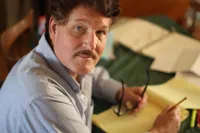"The Society that separates its Scholars from its Warriors, will have its thinking done by cowards and its fighting done by fools." Thucydides

PURPOSE: Become the Scholar Warrior for your Goals
Improve Every Single Day!
Improve Yourself 1% a Day = 3600%+ in a Year
Thought-Technique-Strategy of the Week:
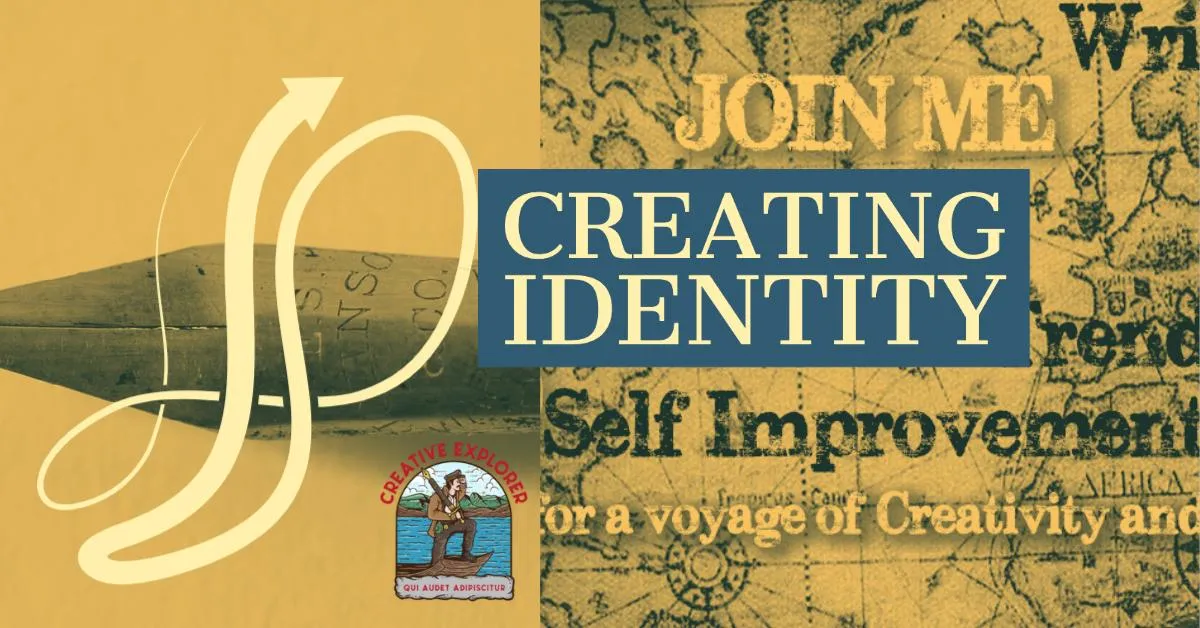
Create Your Powerful Identity
Let's say you wish to excel in the art of painting. Or open your own woodworking business. Or become a Filmmaker which I did many years ago. The key is to utilize a Powerful Identity in reframing your Focus. Let's stick with painter for the moment.
Use the words: "I am a painter." The powerful use of the "I am..." phrase welds this new outlook to you mentally, intellectually but, more importantly, emotionally. Why emotionally? When you talk about painting (or any very exciting goal), then you can feel the electrical excitement within your body and Being.
"Being" is the act of existing within this newly embraced identity. Then you grow and become.
READ THE MAIN ARTICLE HERE
7 Actions To Change Your Life
Michael's Kenpo Karate Weapons Form - Knife & Pistol
You can see my Pistol & Knife form at approximately 10:31 here in the video from 2010. This is at Bryan Hawkins Kenpo Karate where I have studied Kenpo Karate for approximately over 35 years. The form is one that I created to advance in the system, utilizing Kenpo Karate principles. I use the form with the primary weapon as the firearm, duly guarded and using the knife for close-in drills. This is the training the Warrior phase!
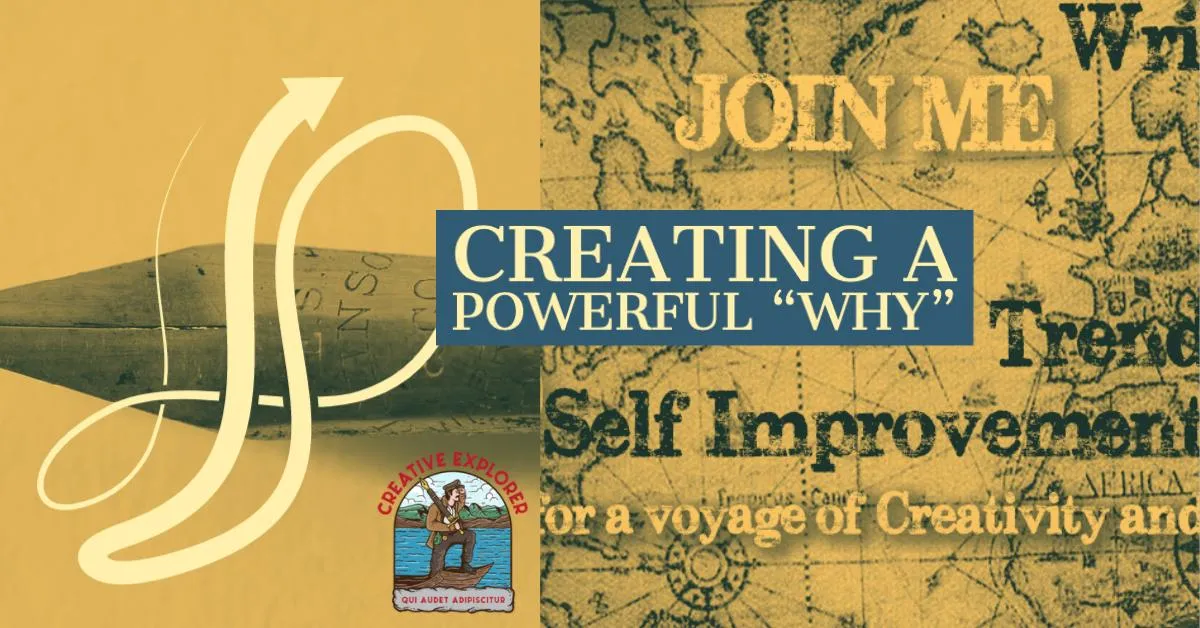



Brainstorming the How: Pursuing Knowledge
Curiousity.
1 : desire to know:
b: interest leading to inquiry
intellectual curiosity e.g. Her natural curiosity led her to ask more questions.
Curiosity is one of the great gifts to have and one of the great skills to cultivate.
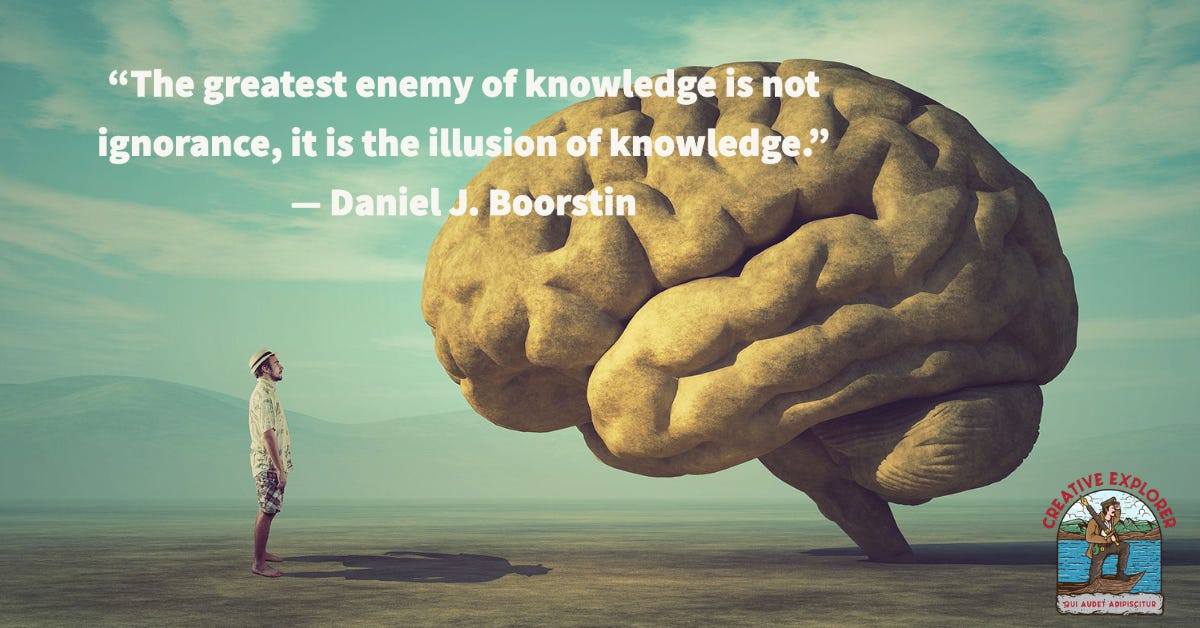
Starting with Great Questions
A friend of mine told me about author and Librarian of Congress Daniel Boorstin’s great books, particularly “The Creators” and “The Discoverers.” In the “Creators”, he discusses how human beings created concepts for Time and Space. We take this for granted, or I did, because Time is such a familiar concept – yet one that we are all ‘fighting’, ‘taking’, ‘wasting’, ‘killing’ or ‘enjoying’.
Boorstin noted that there were sundials and then water clocks (cloudy days!) of stunning technology and accuracy.
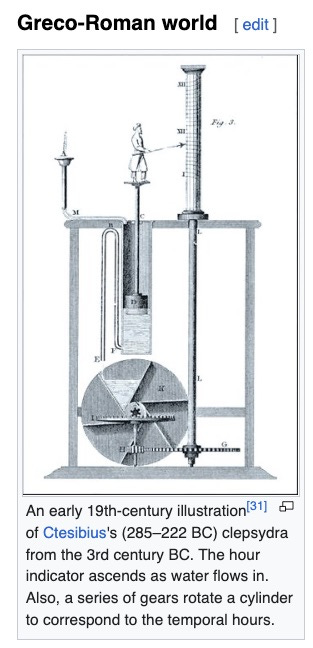
The concept of adhering to and using the ‘hour’ on the clock was when the Dutch, with their massive system of waterways for travel, would have multiple boats leave for a destination from morning to noon. Not just ‘the morning boat’ - a reason why a clock in a town square was central to merchants, city officials and now the average traveler. I had no knowledge in how humans conceptualized, created and chased the knowledge and concept of Time. I tended to take ‘time’ for granted in how the human mind grasped Time and then attempted to organize time.
Boorstin did this: He asked the Unasked Questions and Sought Answers.
Creating Depth of Understanding
In learning martial arts, I met Mr. Parker, the Founder and Grandmaster of the Kenpo Karate system. He would have loved Boorstin’s books having himself written the signature books on martial arts. Both men have and had enormous curiosity to explain their world and perspective.
Mr. Parker was an innovator, bringing Kenpo Karate and martial arts to a much wider audience and a much wider media appeal through his use of TV and media personalities. But he was a man who did not rely on tradition but kept tradition and added innovation.
The Legacy of Ed Parker: “Father of American Kenpo”
Ed Parker was a creative businessman who helped many martial artists open their own dojos. He was also a legend in Hollywood, having trained several stunt men and celebrities, including Elvis Presley, to whom he eventually awarded a first-degree black belt in Kenpo. Parker’s impact on the martial arts world can still be felt today. He left behind a few world-renowned grand masters, including Bob White, Richard "Huk" Planas, and Frank Trejo, who ran a school in California prior to his death.
Parker also helped Bruce Lee gain national attention by introducing him at his International Karate Championships. In addition, he served as one of Elvis Presley's bodyguards during the singer's final years.
But Parker’s greatest contribution to martial arts is undoubtedly his creation of American Kenpo. He is fondly referred to as the "Father of American Kenpo" and is formally known as Senior Grand Master. His legacy lives on in the countless martial artists who continue to train and teach his techniques.
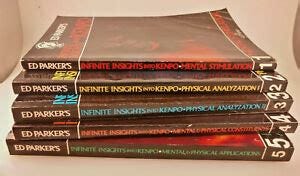
In days when there were no cell phones, answering machines, computers and digital photography, Parker created five stellar books defining principles of martial arts. They werecalled “Infinite Insights Volumes 1 to 5”
Parker did this: He wrote down the principles of martial arts to clarify, understand and teach.
Learn and Teach Others
The Master is the one who can learn material but then teach the material in numerous ways to help the student to learn. Each student may learn differently - sight, sounds, touch (kinesthesia), etc., The true Master will learn all these methods to teach, but the benefit to the master is that they have learned the same material many different ways.
When a friend asked me about how he should make such a pursuit of knowledge. Here’s my list:
Read books and journals on topics
Follow experts to provide up-to-date insights. Make sure they are real unbiased experts.
Ask questions and test understanding with peers
Take courses on the subject.
Participate in debates, discussion groups, and forums for altering perspectives on the topic.
Embrace situations to encounter new information, maybe lectures and conferences or traveling to a new place with a varied cultural background.
Compare sources and double-check your facts to ensure accuracy of information gathered from multiple sources.
Ponder over actual learning rather than memorizing facts; Create connections between concepts for deeper understanding
Boorstin said: "Ideas need no passports from their place of origin, nor visas for the countries they enter ... We, the librarians of the world, are servants of an indivisible world ... Books and ideas make a boundless world."
That is how we together make a better world of understanding.

Brainstorming the How: Pursuing Knowledge
Curiousity.
1 : desire to know:
b: interest leading to inquiry
intellectual curiosity e.g. Her natural curiosity led her to ask more questions.
Curiosity is one of the great gifts to have and one of the great skills to cultivate.

Starting with Great Questions
A friend of mine told me about author and Librarian of Congress Daniel Boorstin’s great books, particularly “The Creators” and “The Discoverers.” In the “Creators”, he discusses how human beings created concepts for Time and Space. We take this for granted, or I did, because Time is such a familiar concept – yet one that we are all ‘fighting’, ‘taking’, ‘wasting’, ‘killing’ or ‘enjoying’.
Boorstin noted that there were sundials and then water clocks (cloudy days!) of stunning technology and accuracy.

The concept of adhering to and using the ‘hour’ on the clock was when the Dutch, with their massive system of waterways for travel, would have multiple boats leave for a destination from morning to noon. Not just ‘the morning boat’ - a reason why a clock in a town square was central to merchants, city officials and now the average traveler. I had no knowledge in how humans conceptualized, created and chased the knowledge and concept of Time. I tended to take ‘time’ for granted in how the human mind grasped Time and then attempted to organize time.
Boorstin did this: He asked the Unasked Questions and Sought Answers.
Creating Depth of Understanding
In learning martial arts, I met Mr. Parker, the Founder and Grandmaster of the Kenpo Karate system. He would have loved Boorstin’s books having himself written the signature books on martial arts. Both men have and had enormous curiosity to explain their world and perspective.
Mr. Parker was an innovator, bringing Kenpo Karate and martial arts to a much wider audience and a much wider media appeal through his use of TV and media personalities. But he was a man who did not rely on tradition but kept tradition and added innovation.
The Legacy of Ed Parker: “Father of American Kenpo”
Ed Parker was a creative businessman who helped many martial artists open their own dojos. He was also a legend in Hollywood, having trained several stunt men and celebrities, including Elvis Presley, to whom he eventually awarded a first-degree black belt in Kenpo. Parker’s impact on the martial arts world can still be felt today. He left behind a few world-renowned grand masters, including Bob White, Richard "Huk" Planas, and Frank Trejo, who ran a school in California prior to his death.
Parker also helped Bruce Lee gain national attention by introducing him at his International Karate Championships. In addition, he served as one of Elvis Presley's bodyguards during the singer's final years.
But Parker’s greatest contribution to martial arts is undoubtedly his creation of American Kenpo. He is fondly referred to as the "Father of American Kenpo" and is formally known as Senior Grand Master. His legacy lives on in the countless martial artists who continue to train and teach his techniques.

In days when there were no cell phones, answering machines, computers and digital photography, Parker created five stellar books defining principles of martial arts. They werecalled “Infinite Insights Volumes 1 to 5”
Parker did this: He wrote down the principles of martial arts to clarify, understand and teach.
Learn and Teach Others
The Master is the one who can learn material but then teach the material in numerous ways to help the student to learn. Each student may learn differently - sight, sounds, touch (kinesthesia), etc., The true Master will learn all these methods to teach, but the benefit to the master is that they have learned the same material many different ways.
When a friend asked me about how he should make such a pursuit of knowledge. Here’s my list:
Read books and journals on topics
Follow experts to provide up-to-date insights. Make sure they are real unbiased experts.
Ask questions and test understanding with peers
Take courses on the subject.
Participate in debates, discussion groups, and forums for altering perspectives on the topic.
Embrace situations to encounter new information, maybe lectures and conferences or traveling to a new place with a varied cultural background.
Compare sources and double-check your facts to ensure accuracy of information gathered from multiple sources.
Ponder over actual learning rather than memorizing facts; Create connections between concepts for deeper understanding
Boorstin said: "Ideas need no passports from their place of origin, nor visas for the countries they enter ... We, the librarians of the world, are servants of an indivisible world ... Books and ideas make a boundless world."
That is how we together make a better world of understanding.

Brainstorming the How: Pursuing Knowledge
Curiousity.
1 : desire to know:
b: interest leading to inquiry
intellectual curiosity e.g. Her natural curiosity led her to ask more questions.
Curiosity is one of the great gifts to have and one of the great skills to cultivate.

Starting with Great Questions
A friend of mine told me about author and Librarian of Congress Daniel Boorstin’s great books, particularly “The Creators” and “The Discoverers.” In the “Creators”, he discusses how human beings created concepts for Time and Space. We take this for granted, or I did, because Time is such a familiar concept – yet one that we are all ‘fighting’, ‘taking’, ‘wasting’, ‘killing’ or ‘enjoying’.
Boorstin noted that there were sundials and then water clocks (cloudy days!) of stunning technology and accuracy.

The concept of adhering to and using the ‘hour’ on the clock was when the Dutch, with their massive system of waterways for travel, would have multiple boats leave for a destination from morning to noon. Not just ‘the morning boat’ - a reason why a clock in a town square was central to merchants, city officials and now the average traveler. I had no knowledge in how humans conceptualized, created and chased the knowledge and concept of Time. I tended to take ‘time’ for granted in how the human mind grasped Time and then attempted to organize time.
Boorstin did this: He asked the Unasked Questions and Sought Answers.
Creating Depth of Understanding
In learning martial arts, I met Mr. Parker, the Founder and Grandmaster of the Kenpo Karate system. He would have loved Boorstin’s books having himself written the signature books on martial arts. Both men have and had enormous curiosity to explain their world and perspective.
Mr. Parker was an innovator, bringing Kenpo Karate and martial arts to a much wider audience and a much wider media appeal through his use of TV and media personalities. But he was a man who did not rely on tradition but kept tradition and added innovation.
The Legacy of Ed Parker: “Father of American Kenpo”
Ed Parker was a creative businessman who helped many martial artists open their own dojos. He was also a legend in Hollywood, having trained several stunt men and celebrities, including Elvis Presley, to whom he eventually awarded a first-degree black belt in Kenpo. Parker’s impact on the martial arts world can still be felt today. He left behind a few world-renowned grand masters, including Bob White, Richard "Huk" Planas, and Frank Trejo, who ran a school in California prior to his death.
Parker also helped Bruce Lee gain national attention by introducing him at his International Karate Championships. In addition, he served as one of Elvis Presley's bodyguards during the singer's final years.
But Parker’s greatest contribution to martial arts is undoubtedly his creation of American Kenpo. He is fondly referred to as the "Father of American Kenpo" and is formally known as Senior Grand Master. His legacy lives on in the countless martial artists who continue to train and teach his techniques.

In days when there were no cell phones, answering machines, computers and digital photography, Parker created five stellar books defining principles of martial arts. They werecalled “Infinite Insights Volumes 1 to 5”
Parker did this: He wrote down the principles of martial arts to clarify, understand and teach.
Learn and Teach Others
The Master is the one who can learn material but then teach the material in numerous ways to help the student to learn. Each student may learn differently - sight, sounds, touch (kinesthesia), etc., The true Master will learn all these methods to teach, but the benefit to the master is that they have learned the same material many different ways.
When a friend asked me about how he should make such a pursuit of knowledge. Here’s my list:
Read books and journals on topics
Follow experts to provide up-to-date insights. Make sure they are real unbiased experts.
Ask questions and test understanding with peers
Take courses on the subject.
Participate in debates, discussion groups, and forums for altering perspectives on the topic.
Embrace situations to encounter new information, maybe lectures and conferences or traveling to a new place with a varied cultural background.
Compare sources and double-check your facts to ensure accuracy of information gathered from multiple sources.
Ponder over actual learning rather than memorizing facts; Create connections between concepts for deeper understanding
Boorstin said: "Ideas need no passports from their place of origin, nor visas for the countries they enter ... We, the librarians of the world, are servants of an indivisible world ... Books and ideas make a boundless world."
That is how we together make a better world of understanding.

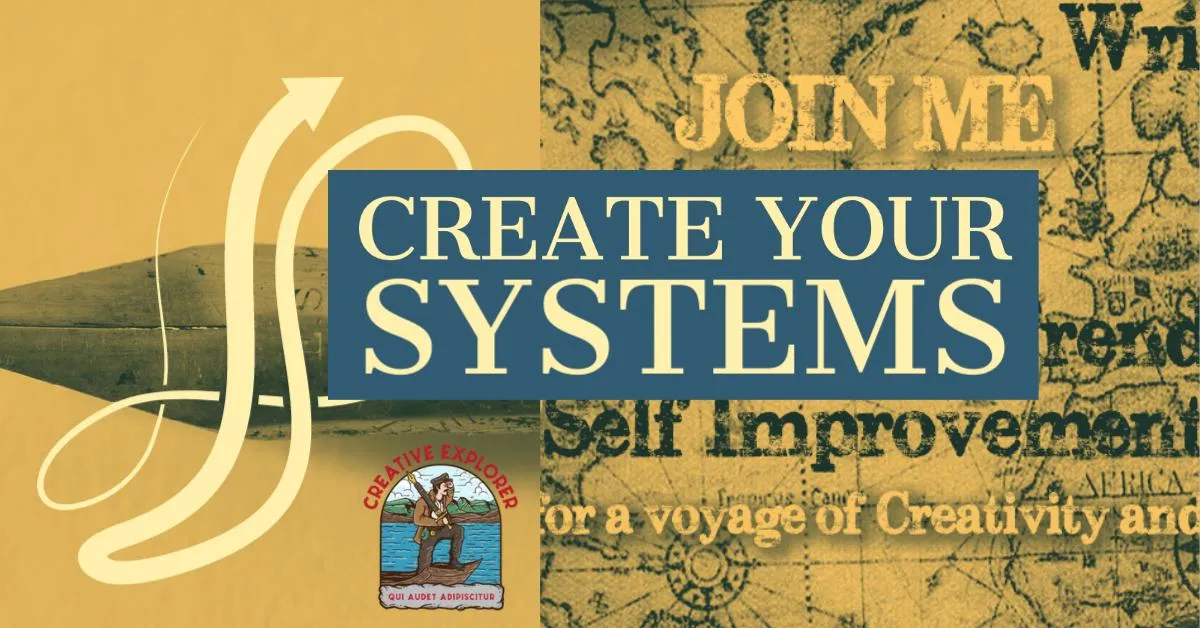
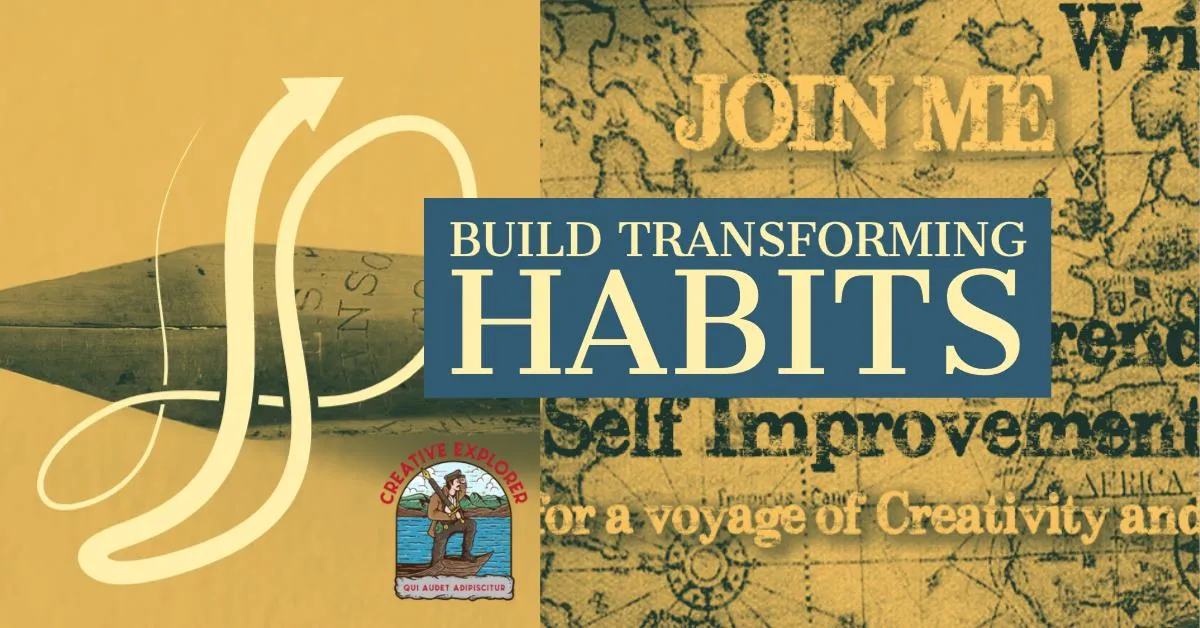


Brainstorming the How: Pursuing Knowledge
Curiousity.
1 : desire to know:
b: interest leading to inquiry
intellectual curiosity e.g. Her natural curiosity led her to ask more questions.
Curiosity is one of the great gifts to have and one of the great skills to cultivate.

Starting with Great Questions
A friend of mine told me about author and Librarian of Congress Daniel Boorstin’s great books, particularly “The Creators” and “The Discoverers.” In the “Creators”, he discusses how human beings created concepts for Time and Space. We take this for granted, or I did, because Time is such a familiar concept – yet one that we are all ‘fighting’, ‘taking’, ‘wasting’, ‘killing’ or ‘enjoying’.
Boorstin noted that there were sundials and then water clocks (cloudy days!) of stunning technology and accuracy.

The concept of adhering to and using the ‘hour’ on the clock was when the Dutch, with their massive system of waterways for travel, would have multiple boats leave for a destination from morning to noon. Not just ‘the morning boat’ - a reason why a clock in a town square was central to merchants, city officials and now the average traveler. I had no knowledge in how humans conceptualized, created and chased the knowledge and concept of Time. I tended to take ‘time’ for granted in how the human mind grasped Time and then attempted to organize time.
Boorstin did this: He asked the Unasked Questions and Sought Answers.
Creating Depth of Understanding
In learning martial arts, I met Mr. Parker, the Founder and Grandmaster of the Kenpo Karate system. He would have loved Boorstin’s books having himself written the signature books on martial arts. Both men have and had enormous curiosity to explain their world and perspective.
Mr. Parker was an innovator, bringing Kenpo Karate and martial arts to a much wider audience and a much wider media appeal through his use of TV and media personalities. But he was a man who did not rely on tradition but kept tradition and added innovation.
The Legacy of Ed Parker: “Father of American Kenpo”
Ed Parker was a creative businessman who helped many martial artists open their own dojos. He was also a legend in Hollywood, having trained several stunt men and celebrities, including Elvis Presley, to whom he eventually awarded a first-degree black belt in Kenpo. Parker’s impact on the martial arts world can still be felt today. He left behind a few world-renowned grand masters, including Bob White, Richard "Huk" Planas, and Frank Trejo, who ran a school in California prior to his death.
Parker also helped Bruce Lee gain national attention by introducing him at his International Karate Championships. In addition, he served as one of Elvis Presley's bodyguards during the singer's final years.
But Parker’s greatest contribution to martial arts is undoubtedly his creation of American Kenpo. He is fondly referred to as the "Father of American Kenpo" and is formally known as Senior Grand Master. His legacy lives on in the countless martial artists who continue to train and teach his techniques.

In days when there were no cell phones, answering machines, computers and digital photography, Parker created five stellar books defining principles of martial arts. They werecalled “Infinite Insights Volumes 1 to 5”
Parker did this: He wrote down the principles of martial arts to clarify, understand and teach.
Learn and Teach Others
The Master is the one who can learn material but then teach the material in numerous ways to help the student to learn. Each student may learn differently - sight, sounds, touch (kinesthesia), etc., The true Master will learn all these methods to teach, but the benefit to the master is that they have learned the same material many different ways.
When a friend asked me about how he should make such a pursuit of knowledge. Here’s my list:
Read books and journals on topics
Follow experts to provide up-to-date insights. Make sure they are real unbiased experts.
Ask questions and test understanding with peers
Take courses on the subject.
Participate in debates, discussion groups, and forums for altering perspectives on the topic.
Embrace situations to encounter new information, maybe lectures and conferences or traveling to a new place with a varied cultural background.
Compare sources and double-check your facts to ensure accuracy of information gathered from multiple sources.
Ponder over actual learning rather than memorizing facts; Create connections between concepts for deeper understanding
Boorstin said: "Ideas need no passports from their place of origin, nor visas for the countries they enter ... We, the librarians of the world, are servants of an indivisible world ... Books and ideas make a boundless world."
That is how we together make a better world of understanding.

Brainstorming the How: Pursuing Knowledge
Curiousity.
1 : desire to know:
b: interest leading to inquiry
intellectual curiosity e.g. Her natural curiosity led her to ask more questions.
Curiosity is one of the great gifts to have and one of the great skills to cultivate.

Starting with Great Questions
A friend of mine told me about author and Librarian of Congress Daniel Boorstin’s great books, particularly “The Creators” and “The Discoverers.” In the “Creators”, he discusses how human beings created concepts for Time and Space. We take this for granted, or I did, because Time is such a familiar concept – yet one that we are all ‘fighting’, ‘taking’, ‘wasting’, ‘killing’ or ‘enjoying’.
Boorstin noted that there were sundials and then water clocks (cloudy days!) of stunning technology and accuracy.

The concept of adhering to and using the ‘hour’ on the clock was when the Dutch, with their massive system of waterways for travel, would have multiple boats leave for a destination from morning to noon. Not just ‘the morning boat’ - a reason why a clock in a town square was central to merchants, city officials and now the average traveler. I had no knowledge in how humans conceptualized, created and chased the knowledge and concept of Time. I tended to take ‘time’ for granted in how the human mind grasped Time and then attempted to organize time.
Boorstin did this: He asked the Unasked Questions and Sought Answers.
Creating Depth of Understanding
In learning martial arts, I met Mr. Parker, the Founder and Grandmaster of the Kenpo Karate system. He would have loved Boorstin’s books having himself written the signature books on martial arts. Both men have and had enormous curiosity to explain their world and perspective.
Mr. Parker was an innovator, bringing Kenpo Karate and martial arts to a much wider audience and a much wider media appeal through his use of TV and media personalities. But he was a man who did not rely on tradition but kept tradition and added innovation.
The Legacy of Ed Parker: “Father of American Kenpo”
Ed Parker was a creative businessman who helped many martial artists open their own dojos. He was also a legend in Hollywood, having trained several stunt men and celebrities, including Elvis Presley, to whom he eventually awarded a first-degree black belt in Kenpo. Parker’s impact on the martial arts world can still be felt today. He left behind a few world-renowned grand masters, including Bob White, Richard "Huk" Planas, and Frank Trejo, who ran a school in California prior to his death.
Parker also helped Bruce Lee gain national attention by introducing him at his International Karate Championships. In addition, he served as one of Elvis Presley's bodyguards during the singer's final years.
But Parker’s greatest contribution to martial arts is undoubtedly his creation of American Kenpo. He is fondly referred to as the "Father of American Kenpo" and is formally known as Senior Grand Master. His legacy lives on in the countless martial artists who continue to train and teach his techniques.

In days when there were no cell phones, answering machines, computers and digital photography, Parker created five stellar books defining principles of martial arts. They werecalled “Infinite Insights Volumes 1 to 5”
Parker did this: He wrote down the principles of martial arts to clarify, understand and teach.
Learn and Teach Others
The Master is the one who can learn material but then teach the material in numerous ways to help the student to learn. Each student may learn differently - sight, sounds, touch (kinesthesia), etc., The true Master will learn all these methods to teach, but the benefit to the master is that they have learned the same material many different ways.
When a friend asked me about how he should make such a pursuit of knowledge. Here’s my list:
Read books and journals on topics
Follow experts to provide up-to-date insights. Make sure they are real unbiased experts.
Ask questions and test understanding with peers
Take courses on the subject.
Participate in debates, discussion groups, and forums for altering perspectives on the topic.
Embrace situations to encounter new information, maybe lectures and conferences or traveling to a new place with a varied cultural background.
Compare sources and double-check your facts to ensure accuracy of information gathered from multiple sources.
Ponder over actual learning rather than memorizing facts; Create connections between concepts for deeper understanding
Boorstin said: "Ideas need no passports from their place of origin, nor visas for the countries they enter ... We, the librarians of the world, are servants of an indivisible world ... Books and ideas make a boundless world."
That is how we together make a better world of understanding.

Brainstorming the How: Pursuing Knowledge
Curiousity.
1 : desire to know:
b: interest leading to inquiry
intellectual curiosity e.g. Her natural curiosity led her to ask more questions.
Curiosity is one of the great gifts to have and one of the great skills to cultivate.

Starting with Great Questions
A friend of mine told me about author and Librarian of Congress Daniel Boorstin’s great books, particularly “The Creators” and “The Discoverers.” In the “Creators”, he discusses how human beings created concepts for Time and Space. We take this for granted, or I did, because Time is such a familiar concept – yet one that we are all ‘fighting’, ‘taking’, ‘wasting’, ‘killing’ or ‘enjoying’.
Boorstin noted that there were sundials and then water clocks (cloudy days!) of stunning technology and accuracy.

The concept of adhering to and using the ‘hour’ on the clock was when the Dutch, with their massive system of waterways for travel, would have multiple boats leave for a destination from morning to noon. Not just ‘the morning boat’ - a reason why a clock in a town square was central to merchants, city officials and now the average traveler. I had no knowledge in how humans conceptualized, created and chased the knowledge and concept of Time. I tended to take ‘time’ for granted in how the human mind grasped Time and then attempted to organize time.
Boorstin did this: He asked the Unasked Questions and Sought Answers.
Creating Depth of Understanding
In learning martial arts, I met Mr. Parker, the Founder and Grandmaster of the Kenpo Karate system. He would have loved Boorstin’s books having himself written the signature books on martial arts. Both men have and had enormous curiosity to explain their world and perspective.
Mr. Parker was an innovator, bringing Kenpo Karate and martial arts to a much wider audience and a much wider media appeal through his use of TV and media personalities. But he was a man who did not rely on tradition but kept tradition and added innovation.
The Legacy of Ed Parker: “Father of American Kenpo”
Ed Parker was a creative businessman who helped many martial artists open their own dojos. He was also a legend in Hollywood, having trained several stunt men and celebrities, including Elvis Presley, to whom he eventually awarded a first-degree black belt in Kenpo. Parker’s impact on the martial arts world can still be felt today. He left behind a few world-renowned grand masters, including Bob White, Richard "Huk" Planas, and Frank Trejo, who ran a school in California prior to his death.
Parker also helped Bruce Lee gain national attention by introducing him at his International Karate Championships. In addition, he served as one of Elvis Presley's bodyguards during the singer's final years.
But Parker’s greatest contribution to martial arts is undoubtedly his creation of American Kenpo. He is fondly referred to as the "Father of American Kenpo" and is formally known as Senior Grand Master. His legacy lives on in the countless martial artists who continue to train and teach his techniques.

In days when there were no cell phones, answering machines, computers and digital photography, Parker created five stellar books defining principles of martial arts. They werecalled “Infinite Insights Volumes 1 to 5”
Parker did this: He wrote down the principles of martial arts to clarify, understand and teach.
Learn and Teach Others
The Master is the one who can learn material but then teach the material in numerous ways to help the student to learn. Each student may learn differently - sight, sounds, touch (kinesthesia), etc., The true Master will learn all these methods to teach, but the benefit to the master is that they have learned the same material many different ways.
When a friend asked me about how he should make such a pursuit of knowledge. Here’s my list:
Read books and journals on topics
Follow experts to provide up-to-date insights. Make sure they are real unbiased experts.
Ask questions and test understanding with peers
Take courses on the subject.
Participate in debates, discussion groups, and forums for altering perspectives on the topic.
Embrace situations to encounter new information, maybe lectures and conferences or traveling to a new place with a varied cultural background.
Compare sources and double-check your facts to ensure accuracy of information gathered from multiple sources.
Ponder over actual learning rather than memorizing facts; Create connections between concepts for deeper understanding
Boorstin said: "Ideas need no passports from their place of origin, nor visas for the countries they enter ... We, the librarians of the world, are servants of an indivisible world ... Books and ideas make a boundless world."
That is how we together make a better world of understanding.

Brainstorming the How: Pursuing Knowledge
Curiousity.
1 : desire to know:
b: interest leading to inquiry
intellectual curiosity e.g. Her natural curiosity led her to ask more questions.
Curiosity is one of the great gifts to have and one of the great skills to cultivate.

Starting with Great Questions
A friend of mine told me about author and Librarian of Congress Daniel Boorstin’s great books, particularly “The Creators” and “The Discoverers.” In the “Creators”, he discusses how human beings created concepts for Time and Space. We take this for granted, or I did, because Time is such a familiar concept – yet one that we are all ‘fighting’, ‘taking’, ‘wasting’, ‘killing’ or ‘enjoying’.
Boorstin noted that there were sundials and then water clocks (cloudy days!) of stunning technology and accuracy.

The concept of adhering to and using the ‘hour’ on the clock was when the Dutch, with their massive system of waterways for travel, would have multiple boats leave for a destination from morning to noon. Not just ‘the morning boat’ - a reason why a clock in a town square was central to merchants, city officials and now the average traveler. I had no knowledge in how humans conceptualized, created and chased the knowledge and concept of Time. I tended to take ‘time’ for granted in how the human mind grasped Time and then attempted to organize time.
Boorstin did this: He asked the Unasked Questions and Sought Answers.
Creating Depth of Understanding
In learning martial arts, I met Mr. Parker, the Founder and Grandmaster of the Kenpo Karate system. He would have loved Boorstin’s books having himself written the signature books on martial arts. Both men have and had enormous curiosity to explain their world and perspective.
Mr. Parker was an innovator, bringing Kenpo Karate and martial arts to a much wider audience and a much wider media appeal through his use of TV and media personalities. But he was a man who did not rely on tradition but kept tradition and added innovation.
The Legacy of Ed Parker: “Father of American Kenpo”
Ed Parker was a creative businessman who helped many martial artists open their own dojos. He was also a legend in Hollywood, having trained several stunt men and celebrities, including Elvis Presley, to whom he eventually awarded a first-degree black belt in Kenpo. Parker’s impact on the martial arts world can still be felt today. He left behind a few world-renowned grand masters, including Bob White, Richard "Huk" Planas, and Frank Trejo, who ran a school in California prior to his death.
Parker also helped Bruce Lee gain national attention by introducing him at his International Karate Championships. In addition, he served as one of Elvis Presley's bodyguards during the singer's final years.
But Parker’s greatest contribution to martial arts is undoubtedly his creation of American Kenpo. He is fondly referred to as the "Father of American Kenpo" and is formally known as Senior Grand Master. His legacy lives on in the countless martial artists who continue to train and teach his techniques.

In days when there were no cell phones, answering machines, computers and digital photography, Parker created five stellar books defining principles of martial arts. They werecalled “Infinite Insights Volumes 1 to 5”
Parker did this: He wrote down the principles of martial arts to clarify, understand and teach.
Learn and Teach Others
The Master is the one who can learn material but then teach the material in numerous ways to help the student to learn. Each student may learn differently - sight, sounds, touch (kinesthesia), etc., The true Master will learn all these methods to teach, but the benefit to the master is that they have learned the same material many different ways.
When a friend asked me about how he should make such a pursuit of knowledge. Here’s my list:
Read books and journals on topics
Follow experts to provide up-to-date insights. Make sure they are real unbiased experts.
Ask questions and test understanding with peers
Take courses on the subject.
Participate in debates, discussion groups, and forums for altering perspectives on the topic.
Embrace situations to encounter new information, maybe lectures and conferences or traveling to a new place with a varied cultural background.
Compare sources and double-check your facts to ensure accuracy of information gathered from multiple sources.
Ponder over actual learning rather than memorizing facts; Create connections between concepts for deeper understanding
Boorstin said: "Ideas need no passports from their place of origin, nor visas for the countries they enter ... We, the librarians of the world, are servants of an indivisible world ... Books and ideas make a boundless world."
That is how we together make a better world of understanding.
Take Action Today!
SCHOLAR WARRIOR WAY - COURSES
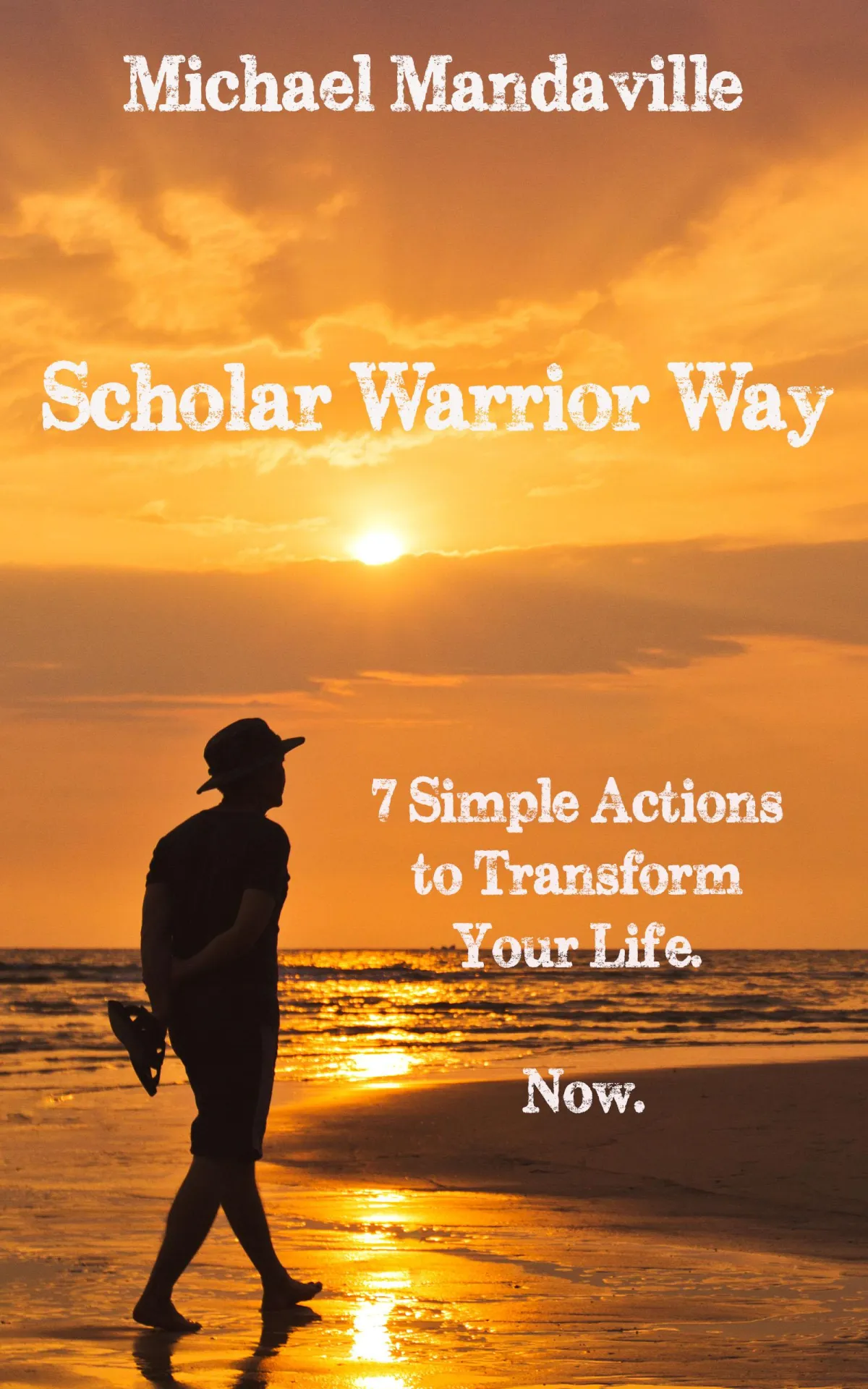
Scholar Warrior Way
Take Action to Transform Yourself
By taking the Scholar Warrior Way Course, you will get Michael's program for Self-Improvement in his pursuit of Creative Excellence in Writing, Filmmaking, Martial arts and his other pursuits from his major curious outlook. Here are the 7 Steps that he uses....
Powerful Why - the Key to Enthusiasm and Fulfillment
Scholar Warrior Identity - Embracing the new Mentality - now!
Your Morning Routine - Starting the day Right.
Brainstorming Your How - Strategy thinking and tactics
Create Your Own Systems - Become efficient with predictable results
Building Transforming Habits - Habit creates Destiny
The Art of Sleep - Long ignored but a necessary health break.
Levels 1, 2 and 3 - Detailing and add more videos, wisdom, resources and Learning Materials for your Growth and Self-Improvement.
FAQS
What is The Purpose of the "ScholarWarriorWay" ?
By engaging in the mental perspective of the Scholar Warrior, you embrace two aspects of your life: The Scholar with a constant focus on self-development and self-improvement. The Warrior whereby you learn techniques about courage, action and derring-do to achieve your true authentic goals for a fulfilled life.
How much does Scholar Warrior Way cost?
The cost of could be absolutely no money if you just want to get on our newsletter to read the various articles on the website. If you want to take the courses on various levels, then you might spend $200-300 per year. Think of it this way: If you could improve yourself 100-200-300-1000-3600% in a single year, then how much is it worth? The price of two meals and drinks at a restaurant that you'll never remember? Make a better life choice.
How do I know I work with the ScholarWarriorWay?
ScholarWarriorWay is broken down into 7 Major Strategies. You can pick one and work on it for a few weeks, then add another strategies. They start with the Powerful Why and end with the Art of Sleep.

